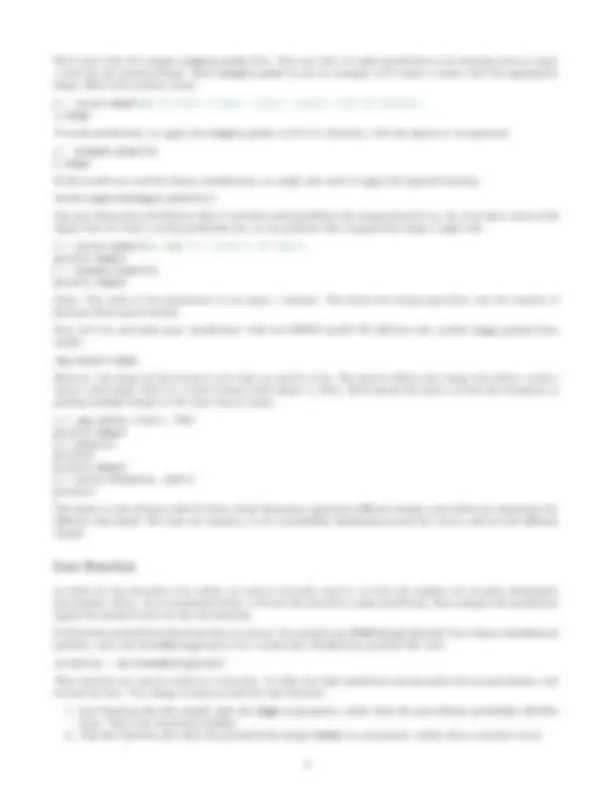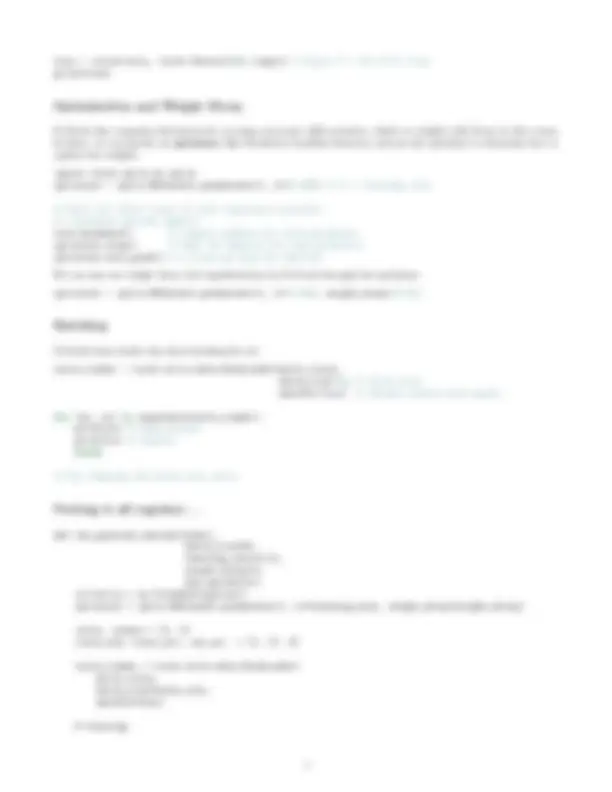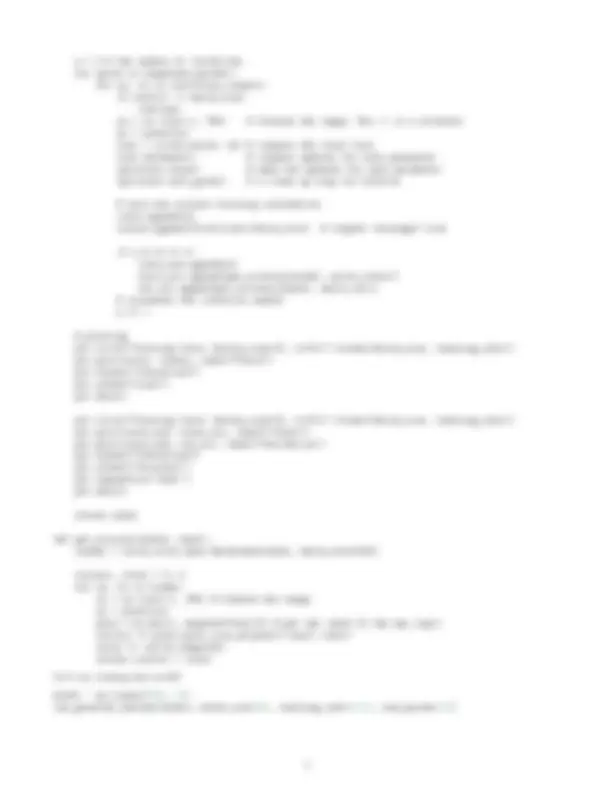





Study with the several resources on Docsity

Earn points by helping other students or get them with a premium plan


Prepare for your exams
Study with the several resources on Docsity

Earn points to download
Earn points by helping other students or get them with a premium plan
Community
Ask the community for help and clear up your study doubts
Discover the best universities in your country according to Docsity users
Free resources
Download our free guides on studying techniques, anxiety management strategies, and thesis advice from Docsity tutors
To build a linear model in PyTorch, we create an instance of the class nn. ... CrossEntropyLoss() for a multi-class classification problem like ours.
Typology: Study notes
1 / 6

This page cannot be seen from the preview
Don't miss anything!




In this tutorial, we’ll go through an example of a multi-class linear classification problem using PyTorch. Training models in PyTorch requires much less of the kind of code that you are required to write for project 1. However, PyTorch hides a lot of details of the computation, both of the computation of the prediction, and the computation of the gradients. In your later projects, you’ll work with both numpy to understand deeply how your models actually work, but also learn PyTorch to gain practical skills in building machine learning models. In the process, we will:
The MNIST dataset contains black and white, hand-written (numerical) digits that are 28x28 pixels large. This is a data set that is typically used for demonstrations of machine learning models, and as a first data set to test new types of models.
We will download the dataset. For simplicity, we’ll only use the first 2500 images in the MNIST dataset. The first time you run this code, we will download the MNIST dataset. from torchvision import datasets
# load the training data mnist_train = datasets.MNIST('data', train=True, download=True) mnist_train = list(mnist_train)[:2500]
print(mnist_train[0]) Let’s take a look at some of the data: # plot the first 18 images in the training data import matplotlib.pyplot as plt for k, (image, label) in enumerate(mnist_train[:18]): plt.subplot(3, 6, k+1) plt.imshow(image, cmap='gray') PyTorch has code written for us to convert an image into numerical pixel features. The tensor still preserves the 2D geometry of the image (we still get a 1x28x28 shape) and does not yet flatten the image into a vector (to get a 1x shape) like we discussed in lecture. from torchvision import transforms # transform the image data type to a 28x28 matrix of numbers img_to_tensor = transforms.ToTensor()
# convert the last image we saw into a tensor img_tensor = img_to_tensor(image) img_tensor.shape If we want to convert the entire dataset into these tensor representations (as opposed to PIL.Image objects), there is a transform parameter that we can use when loading the MNIST dataset:
mnist_train = datasets.MNIST('data', train=True, transform=img_to_tensor) mnist_train = list(mnist_train)[:2500] print(mnist_train[0]) Now, we’ll split this data into training and validation, and start to build our model. We won’t need a test set for this tutorial, but in general we will also have a test set. mnist_train, mnist_val = mnist_train[:2000], mnist_train[2000:]
To build a linear model in PyTorch, we create an instance of the class nn.Linear, and specify the number of input features, and the number of output features. For linear regression and binary classification, the number of output features is 1. For multi-class classification, we have as many outputs as there are classes.
When using this model for classification, we’ll need to apply the sigmoid or softmax activiation afterwards. That is, this object is only meant to handle the linear part of the model computation. import torch import torch.nn as nn
example_model = nn.Linear(50, 1) # assume 50 features, 1 linear output The example_model object contains weights and biases of the model. By default, PyTorch initializes these values to a random number close to 0: weight, bias = list(example_model.parameters()) print(weight) print(weight.shape) print(bias) print(bias.shape) If we create a new model, those initial parameters will change: example_model = nn.Linear(50, 1) weight, bias = list(example_model.parameters())
# These values should be different from above print(weight) print(weight.shape) print(bias) print(bias.shape) Now, let’s create the actual model that we will train to solve the MNIST digit classification problem. How many input features do we have? How many output features do we need? model = nn.Linear(784, 10) # 784 = 28*
# Let's verify that the shapes of the weights and biases are what we expect weight, bias = list(model.parameters()) print(weight.shape) print(bias.shape)
Let’s see how we can make a prediction with this model. (You might find it strange that we’re talking about how to make predictions before talking about how to train the model. The reason is that we will always train the model using a varient of gradient descent. So you can imagine that the weights of this model will eventually become more meaningful than it is now)
loss = criterion(y, torch.Tensor([8]).long()) # digit 8 = the 8-th class print(loss)
PyTorch also computes derivatives for us using automatic differentiation , which we (might) talk about in this course. In short, we can specify an optimizer (like Stochastic Gradient Descent), and use the optimizer to determine how to update the weights. import torch.optim as optim optimizer = optim.SGD(model.parameters(), lr=0.005) # lr = learning rate
_# There are three lines of code required to perform
loss.backward() # compute updates for each parameter optimizer.step() # make the updates for each parameter optimizer.zero_grad() # a clean up step for PyTorch
We can also use weight decay (L2 regularization) in PyTorch through the optimizer:
optimizer = optim.SGD(model.parameters(), lr=0.005, weight_decay=0.01)
PyTorch data loader also does batching for us! train_loader = torch.utils.data.DataLoader(mnist_train, batch_size=32, # batch size shuffle=True) # shuffle before each epoch
for (xs, ts) in enumerate(train_loader): print(xs) # image pixels print(ts) # targets break
# Try changing the batch_size above
def run_gradient_descent(model, batch_size=64, learning_rate=0.01, weight_decay=0, num_epochs=10): criterion = nn.CrossEntropyLoss() optimizer = optim.SGD(model.parameters(), lr=learning_rate, weight_decay=weight_decay)
iters, losses = [], [] iters_sub, train_acc, val_acc = [], [] ,[]
train_loader = torch.utils.data.DataLoader( mnist_train, batch_size=batch_size, shuffle=True)
n = 0 # the number of iterations for epoch in range(num_epochs): for xs, ts in iter(train_loader): if len(ts) != batch_size: continue xs = xs.view(-1, 784) # flatten the image. The -1 is a wildcard zs = model(xs) loss = criterion(zs, ts) # compute the total loss loss.backward() # compute updates for each parameter optimizer.step() # make the updates for each parameter optimizer.zero_grad() # a clean up step for PyTorch
iters.append(n) losses.append(float(loss)/batch_size) # compute average loss
if n % 10 == 0: iters_sub.append(n) train_acc.append(get_accuracy(model, mnist_train)) val_acc.append(get_accuracy(model, mnist_val))
n += 1
plt.title("Training Curve (batch_size={}, lr={})".format(batch_size, learning_rate)) plt.plot(iters, losses, label="Train") plt.xlabel("Iterations") plt.ylabel("Loss") plt.show()
plt.title("Training Curve (batch_size={}, lr={})".format(batch_size, learning_rate)) plt.plot(iters_sub, train_acc, label="Train") plt.plot(iters_sub, val_acc, label="Validation") plt.xlabel("Iterations") plt.ylabel("Accuracy") plt.legend(loc='best') plt.show()
return model
def get_accuracy(model, data): loader = torch.utils.data.DataLoader(data, batch_size=500)
correct, total = 0, 0 for xs, ts in loader: xs = xs.view(-1, 784) # flatten the image zs = model(xs) pred = zs.max(1, keepdim=True)[1] # get the index of the max logit correct += pred.eq(ts.view_as(pred)).sum().item() total += int(ts.shape[0]) return correct / total
Let’s try training this model!
model = nn.Linear(784, 10) run_gradient_descent(model, batch_size=64, learning_rate=0.01, num_epochs=10)